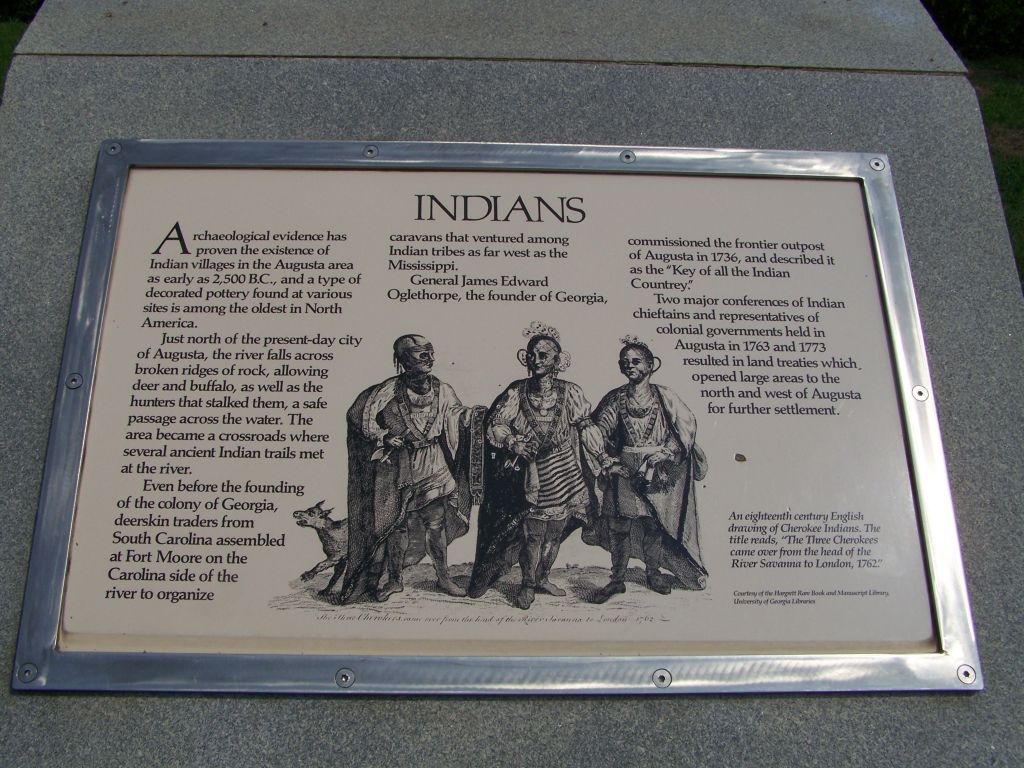Photograph as originally submitted to
this page in the Historical Marker Database
www.HMdb.org.
Click on photo to resize in browser. Scroll down to see metadata.
Photographer: Mike Stroud
Taken: 2008
Caption:
Five Indian Nations Marker additional marker along River Walk Park ~ | Additional Description:
Indians
Archeaological evidence has proven the existence of Indian villages in the Augusta area as early as 2,500 B.C., and a type of decorated pottery found at various
sites is amoung the oldest in North America. Just north of the present-day city of Augusta, the river falls across broken ridges of rock, allowing deer and buffalo, as well as the hunters that stalked them, a safe passage across the water. The area became the crossroads where several ancient Indian trails met at the river. Even before the founding of the colony of Georgia, deerskin traders from South Carolina
assembled at Fort Moore on the Carolina side of the river to organize caravans that ventured amoung Indian tribes as far west as the Mississippi. General James
Oglethorpe, the founder of Georgia, commissioned the frontier outpost of Augusta in 1736, and described it as the " Key of all the Indian Countrey".
Two major conferences of the Indian chieftains and representatives of colonial governments held in Augusta in 1763 and 1773 resulted in land treaties which opened large areas to the north and west of Augusta for further settlement.
An eighteenth century English drawing of Cherokee Indians. The title reads,
" The Three Cherokees came over from the head of the River Savanna to London, 1762." Courtsey of the Hargrett Rare Book and Manuscript Library, University of Georgia Libraries
Submitted: August 5, 2008, by Mike Stroud of Bluffton, South Carolina.
Database Locator Identification Number: p30706
File Size: 0.174 Megabytes
To see the metadata that may be embedded in this photo, sign in and then return to this page.
